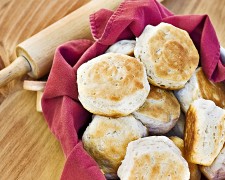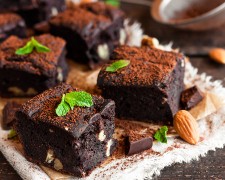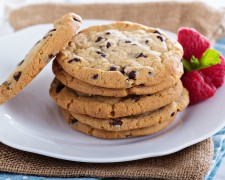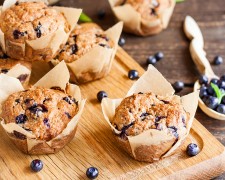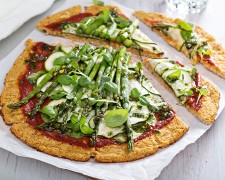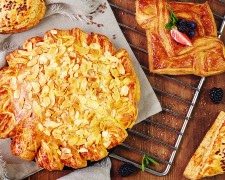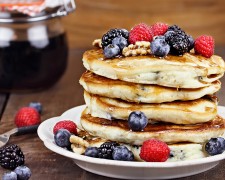Baking with Almond Flour | Breads
Gluten Free Bread with Almond Flour
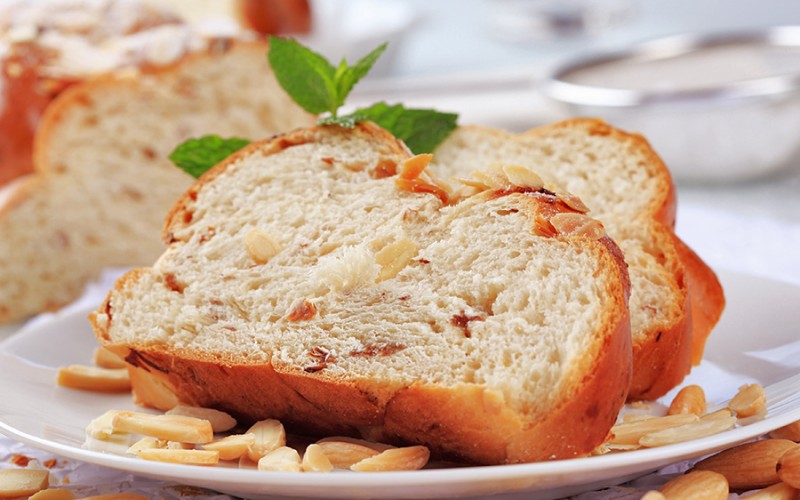
When baking bread with Nature's Eats Almond Flour, there are modifications that need to be made to get the best possible results. Almond Flour Bread can tend to be slightly denser than wheat bread. Since there is no gluten in the almond flour, there are other techniques to explore to help the dough bind and rise properly.
As I began the experimentation of baking bread with almond flour, I also discovered that bread is sometimes made with yeast, and sometimes without. To be honest I never really even understood what exactly the yeast was for when baking bread. What that means to you is that if I can figure out how to make bread with almond flour, you can as well.
So this is what I learned about yeast. Yeast is a living single-celled fungus that is useful in making both bread and beer. It is the carbon dioxide (CO2) that comes from the metabolism of the carbohydrates from the yeast that makes bread rise. Baking soda and baking powder, although they are also leavening agents, do not emulate the same feeding process. So once I began to understand this, I had to research and learn how to emulate this sort of reaction using other ingredients. I found that there is an acid-based reaction that can also create CO2, and with the right combination of ingredients, this can replicate what needs to happen when baking bread without yeast.
If you want to use baking soda, the key is to make sure that the ingredients you are working with will respond to the baking powder for the acidic reaction. Who would have ever thought a combination of lemon juice or apple cider vinegar and baking soda could be the answer. Be sure to substitute the same amount a recipe calls for with equal parts of baking soda, apple cider vinegar, lemon juice, buttermilk, milk, or vinegar.
Baking powder is another option since it is simply a combination of baking soda and acid. The trick is to use double-acting baking powder since it contains two acids that allow the baking soda to react two times, once when it gets wet and another when it is heated. Although there is no perfect substitute for yeast, there are tricks that may just work. This substitution works best if you are making a quick bread.
When baking almond flour bread, you can choose to work with yeast or try out the substitutions above. The results tend to be denser as would be expected as most baked goods made with almond flour tend to be dense by the nature of the almond flour. The other beautiful part of baking bread with almond flour is that it has this natural slightly nutty and sweet flavor which just makes the bread even more delicious.
When I was experimenting with Almond Flour Bread, I found that it was nice to mix a combination of different flours, but using mostly the almond flour. The addition of a little coconut flour, buckwheat flour, or tapioca flour helps lighten up the density of the bread. If you are looking for the top gluten-free bread, be sure that the other flours incorporated are suitable for a gluten-free diet. Try out your own combination of almond flour and other traditional flours if you’d like to. It mostly comes down to why you are choosing to bake with almond flour in the first place, which could be for a variety of reasons.
So, we’ve already talked about getting almond flour bread to rise, and we must also look at ways to help the flour bind when baking with almond flour. Binding can be a challenge when you are making gluten-free bread. However, almond flour with its dense nature is entirely different to work with when baking compared to traditional flours. I have found that things like eggs, flax, or chia eggs (for the vegans out there), xanthan gum, guar gum, and psyllium can substitute as good binders instead of gluten, but they each behave differently. It’s nice to know what to expect from each when it comes to baking with almond flour so that you can make them work for you.
Here is a quick guide to using these various binding substitutes when making gluten-free bread. The top gluten-free bread is the one that you can't even tell are gluten-free. Nothing is going to be perfect, so this is where we have to be slightly flexible and find the ones that work best for us.
Xanthan gum
Xanthan gum is a product of broken-down bacteria during the fermentation process of wheat, corn, soy, and dairy. It is then harvested and turned into a powder after drying it. It is excellent for binding, structure-building, and elasticity for baked goods. In most cases, a little goes a long way. One-fourth teaspoon of xanthan gum is all that you need per one cup of almond flour. It has a shelf life, so be sure to watch the expiration date.
Guar Gum
This is plant-based although the name doesn't sound like it. It is good for binding and structure building but is not as elastic as the xanthan gum. It's not always the best first choice because it may require a lot of tweaking to make it work well, so you may want to try the xanthan gum over this option. Guar gum does help with the fluff factor, so you could try doing a combination of xanthan gum and guar gum. This combo will give you the fluff factor, good binding, structure, and elasticity.
Psyllium, chia seeds, and flax seeds
These seem to be standard go-to’s for many that are doing gluten-free baking, especially if you are vegan. They can also be used as egg replacers, making them great options. They provide decent binding, structure, and elasticity, however, if you are using them beyond being egg replacers, they each have flavor and texture. So, with baked goods, they may or may not be the best options unless you don't mind their seed taste and texture. Also keep in mind that after a few days, the baked items tend to become crumbly.
If you are looking for a product to help with the binding, structure, and elasticity of your baked bread and want the top gluten-free bread, you may find that xanthan gum may be an ideal option. Using the last options as egg replacers may not be a bad idea, but then add a little xanthan gum to the mix as well.
At the end of the day, the lessons I have learned about baking bread with almond flour are that from the get-go; baking bread is an art in itself. This means that whether you are baking gluten-free bread, almond flour bread, or traditional bread, there is an art to it, and as with anything else, practice makes perfect.
Starting simple and experiment with basic or quick bread. Working without yeast helps you avoid the entire process of having to make the bread rise. If you are gluten free or following a new eating style that is restricting your gluten or flour intake, it will be well worth your time to do a little experimenting of your own to find your favorite recipes. Take some of the tips and tricks I have mentioned as a way to avoid making mistakes or having baking failures. You may just want to start by trying out some of our recipes for baked goods with almond flour and then venture out to create recipes of your own.
Written by Lisa Saremi- Browse: Recipes
Related Articles
Baking with Almond Flour | Biscuits
Who doesn't enjoy a yummy biscuit with some eggs, with gravy, or your favorite soup? In days before gluten sensitivities were even a reality for me, I remember enjoying some of the best homemade biscuits I had ever had while living in the south. They were buttery, flaky, and almost addicting they were so good. They were something I missed when I started to follow a gluten free lifestyle, but now with almond flour baking, they have made their way back into my life.
Baking with Almond Flour | Brownie Bonanza
Baking brownies with almond flour allows us to work with several healthy brownies recipes. In the process of discovering the best recipes for brownies when baking with almond flour, I quickly found that just like with all other almond flour baking we must find ways to create binding and achieve the rise of the flour.
Baking with Almond Flour | Cookies
Have you ever tried baking with almond flour? Or maybe you have been wondering about what it is like specifically when it comes to making gluten-free cookies and baking with almond flour. This blog was written to share with you some of my personal experiences and how you can make almond flour recipes out of traditional cookie recipes. Learn from my mistakes and get some great tips and tricks on how to substitute almond flour for regular flours that are in many recipes.
Baking with Almond Flour | Muffins
Baking muffins with almond flour can be easy and fun, especially when you know the tips and tricks of how to get the results you want. It is possible to make dairy and gluten-free muffins with almond flour, but in this article, we will mainly be focusing on baking muffins with almond flour and gluten-free foods rather than dairy-free foods.
Baking with Almond Flour | Pizza Crust
There are so many different things you can bake using almond flour, and I must say that pizza crust has become my all-time favorite. Gluten-free cooking is always better when using almond flour and exploring ways to make gluten-free dough at home was well worth the investment of time and experimentation.
Baking with Almond Flour | Unique Desserts
We are all familiar with traditional desserts like cakes, pies, cookies, muffins, donuts, and more. But every now and again we come across unique desserts that can become all-time favorites.
Baking with Almond Flour | Waffles & Pancakes
There are many types of gluten-free breakfast options, and incorporating almond flour into your meal planning is a fun and creative idea that can support your decision to eat gluten-free foods. It allows you to bring in more baked goods and other delicious options like waffles and pancakes.
